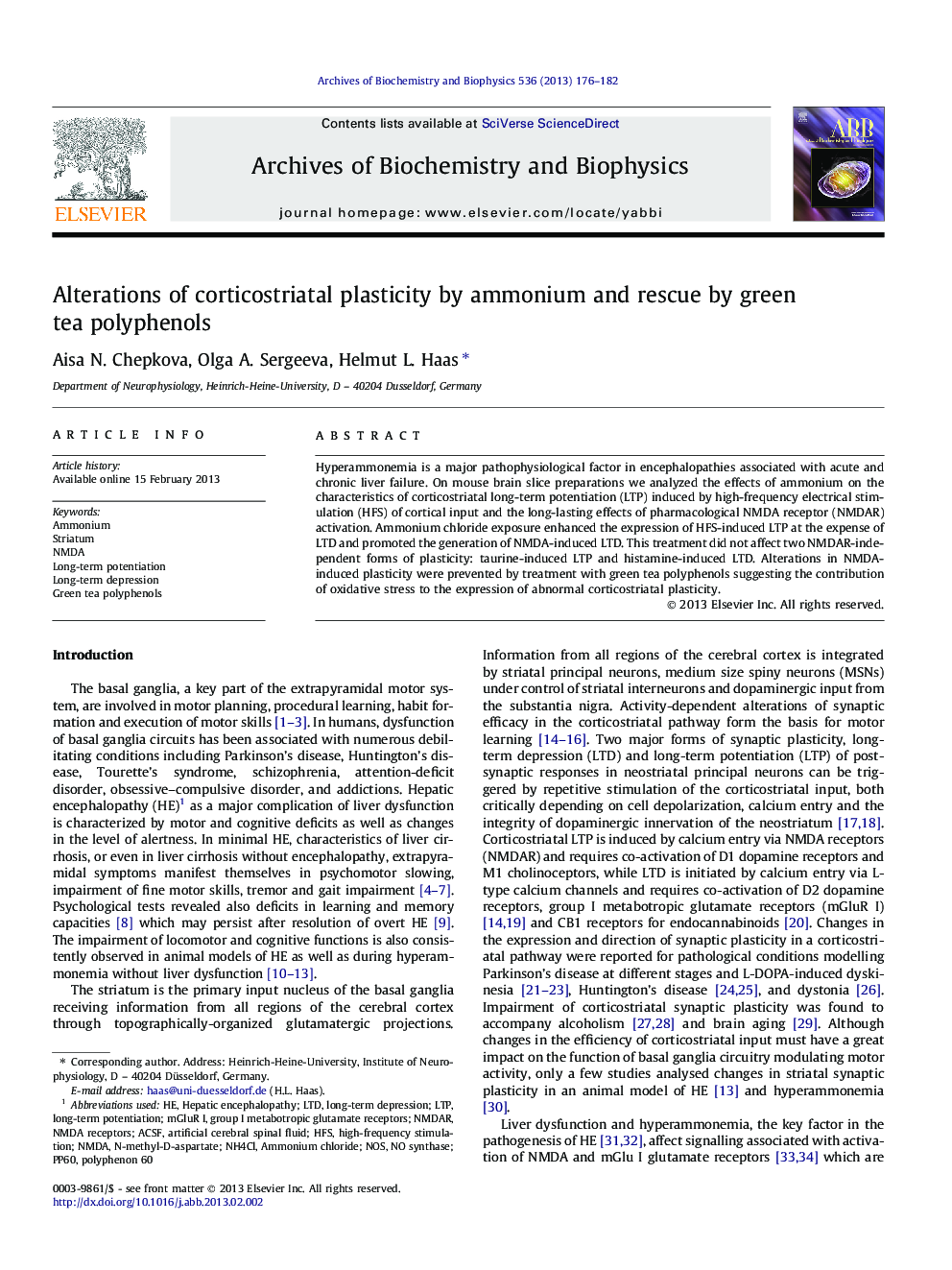| Article ID | Journal | Published Year | Pages | File Type |
|---|---|---|---|---|
| 1925344 | Archives of Biochemistry and Biophysics | 2013 | 7 Pages |
Hyperammonemia is a major pathophysiological factor in encephalopathies associated with acute and chronic liver failure. On mouse brain slice preparations we analyzed the effects of ammonium on the characteristics of corticostriatal long-term potentiation (LTP) induced by high-frequency electrical stimulation (HFS) of cortical input and the long-lasting effects of pharmacological NMDA receptor (NMDAR) activation. Ammonium chloride exposure enhanced the expression of HFS-induced LTP at the expense of LTD and promoted the generation of NMDA-induced LTD. This treatment did not affect two NMDAR-independent forms of plasticity: taurine-induced LTP and histamine-induced LTD. Alterations in NMDA-induced plasticity were prevented by treatment with green tea polyphenols suggesting the contribution of oxidative stress to the expression of abnormal corticostriatal plasticity.
► Synaptic plasticity in corticostriatal pathway is sensitive to hyperammonemia. ► Alterations induced by ammonia are attributable to the enhanced function of NMDA glutamate receptors. ► Polyphenolic antioxidants from green tea prevent ammonia-induced alterations in NMDA-induced plasticity.
